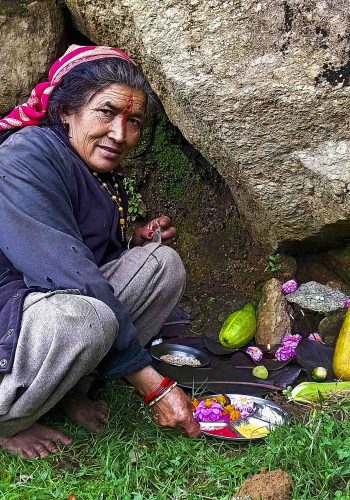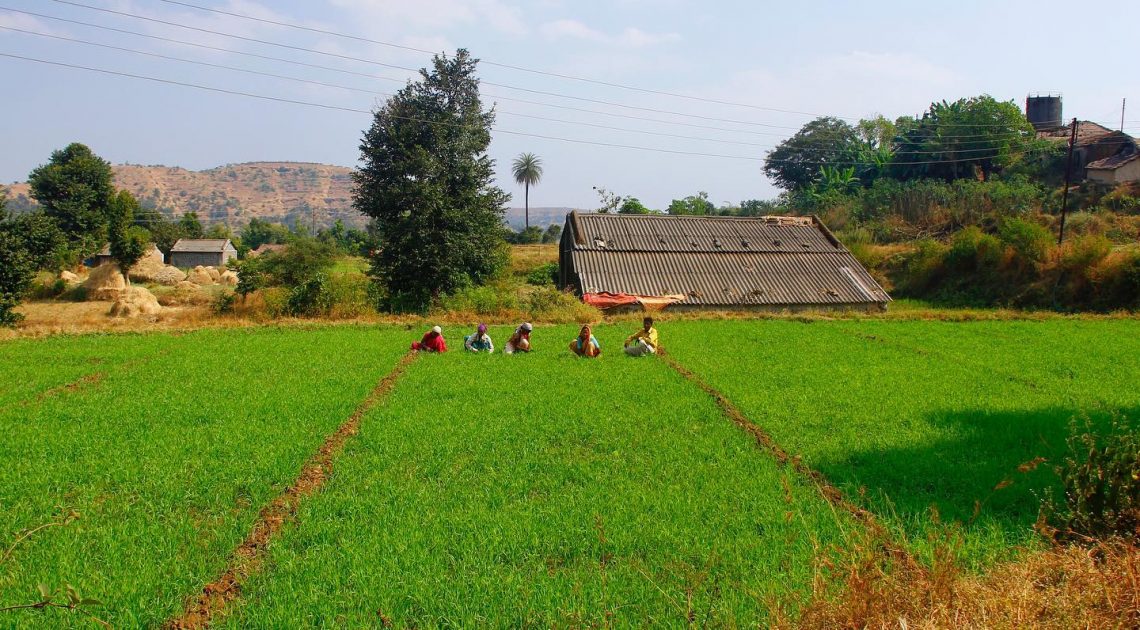
The Village Deity who Protects her People from Pandemics
Over a hundred years ago, a strange illness hit Maharashtra’s Purushwadi village, writes a teacher as he explores faith in the local deity
Story by: Mahadu Chindhu Kondar
Read the original story in Marathi
My parents told me that about 150-200 years ago, there was an epidemic in Purushwadi, the village I grew up in, in the hills of Maharashtra. People from many families would fall sick at the same time. Their hands and legs would lose all strength. They could barely make a sound. They would just stay at home in bed and pass away there.
As sorrow and mourning spread over the entire village, people thought that the gods and goddesses had cursed their land. Fearing for their lives, many went away to live on their farms. Some even went up the hill to live there. Soon, the entire village became oos padla – deserted, quiet, desolate, with no human activity. Only the temples remained.
As my ancestors tried to decipher why the gods and goddesses had cursed their village, a realization came to light. Purushwadi had two temples right next to each other; one of Jakhubai, the local deity, and the other of Hanuman, the monkey god. The elders figured out that Hanuman is a celibate God and Jakhubai is the symbol of femininity – which means the two temples should never be next to each other. So some knowledgeable folk took the idol of Hanuman to Mula River and immersed it there, and since then people started worshipping only Jakhubai. They initiated a pilgrimage of the deity to prevent any other big crisis from descending on the village.
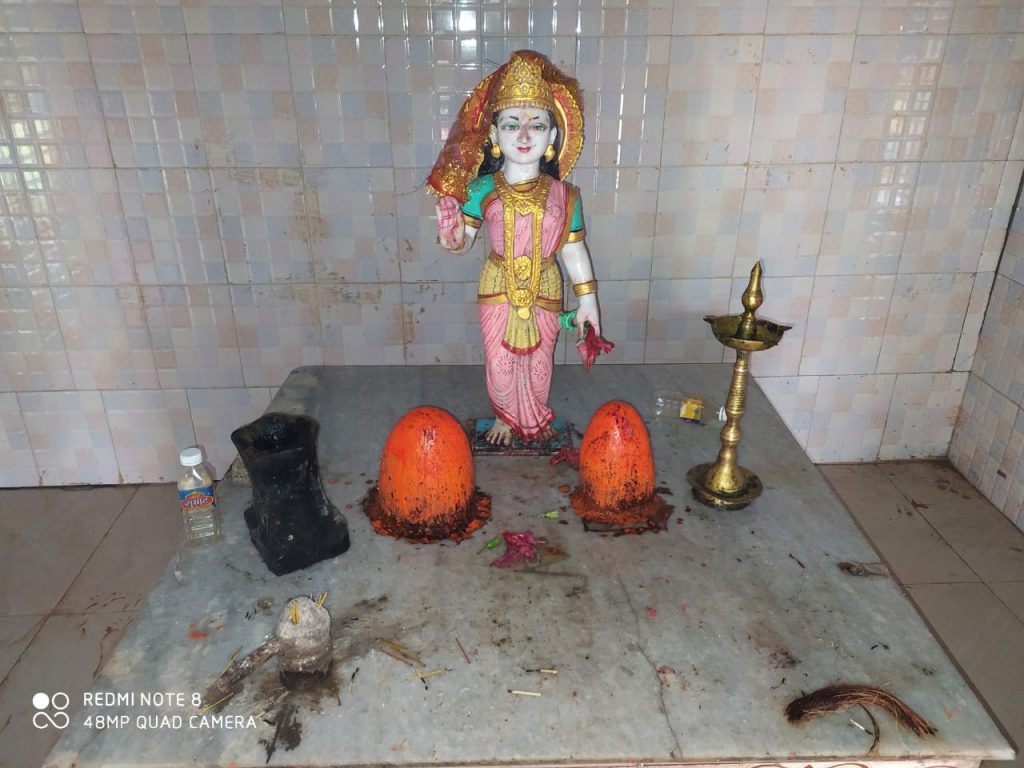
Since then, every year during Chaitra shashtee (sixth day of the Chaitra month – the first month of the Hindu calendar – roughly around mid-March), passionate devotees gather to celebrate the pilgrimage festival of Jakhubai over two days. The first day witnesses a procession of the “stick” – during which some women leave their long hair open, hold the panch aarti thali in their hands and bow down together to the Devi. The procession moves towards the temple to the sounds of sticks and drums, decorated with peacock feathers and strings of cloth flags in different colours. After circling the Jakhubai temple five times and performing puja, the stick is set to stand and tied vertically. Jaggery and coconut are distributed as prasad. As per the folk tradition in Maharashtra, a play or religious songs (bhajans) are performed, followed by a wrestling competition with friendly betting.
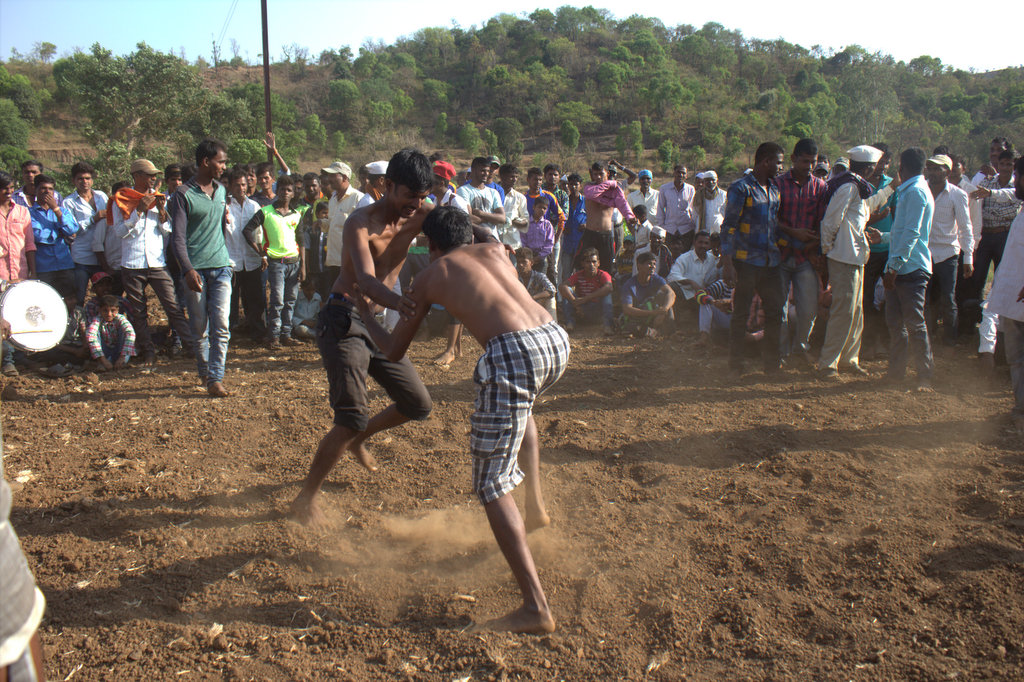
There are no Shiv, Hanuman, Krishna or Vitthal temples in Purushwadi, but the presence of Jakhubai is celebrated since the year 2000, over nine days of Navratri. On the day of Ghatstapna (first day of Navratri), the village folk gather mud from an anthill or a snake’s burrow, place it on banana leaves and sow seven types of grain and cereal in it – including wheat, harbhara (gram/chickpea), vatana (peas), god vaal (sweet butter beans), kadu vaal (bitter butter beans), laakh (similar to peas) and masoor (lentil). An empty jar is filled with water and kept above the soil. Halad (Turmeric) and kunkoo (vermillion), laid out before the Ghat deity, are poured over it. This setup remains for nine days, with marigold flowers hung as toran (garland) near the deity. On the tenth day, the grains from the Ghat are inspected and whichever grain has grown well is believed to bring greater yield that year. That is the cereal sown in the fields!
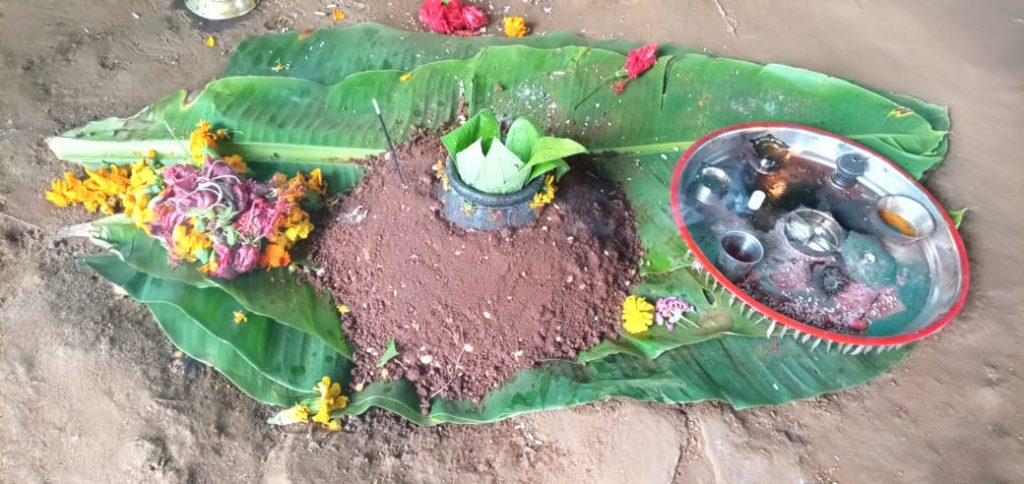
On the day of Dussehra, the seedlings of the grain with maximum growth – called dhan / ghat in our village speak – are uprooted from the temple. People often stick them behind their ears. This is followed by kirtan (prayer songs), mahaprasad (blessed food), fugdi (two people holding hands and spinning in circle), bhavra (spin top) and singing. Finally, the procession leaves to immerse Jakhubai in the Kurkundi River.
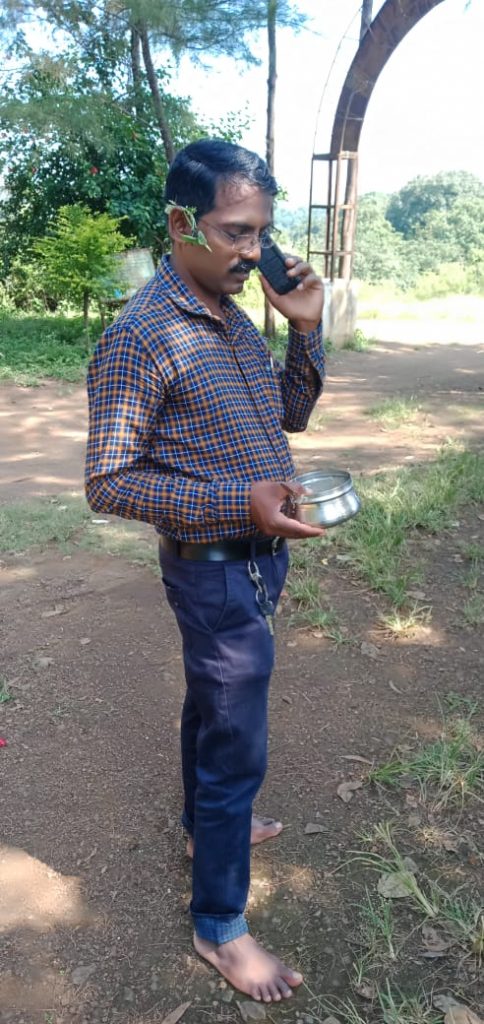
A village resident with the dhan/ghat tucked behind the year. 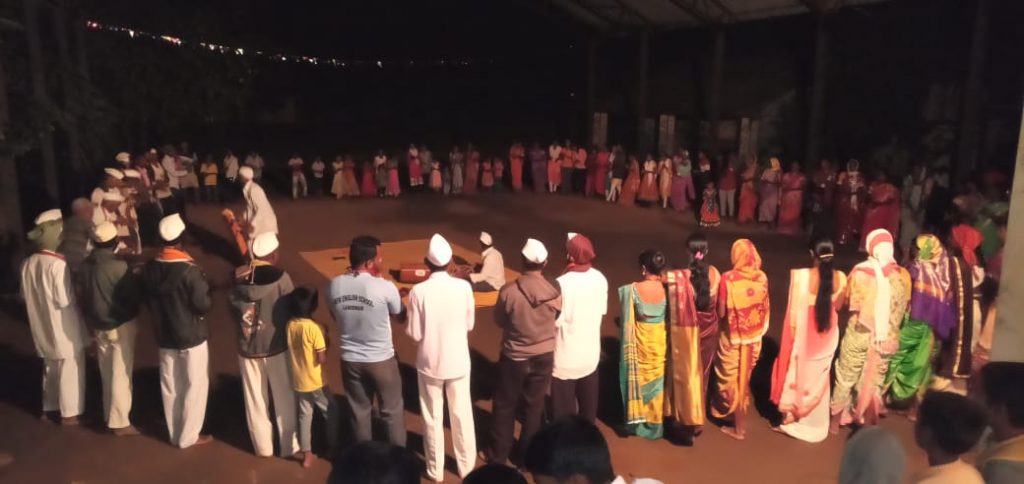
The Navratri prayers. 
Mahadu’s son at the prayers.
For over a hundred years, the people of Purushwadi have continued to worship Jakhubai to protect them from epidemic diseases and bad times. When such a crisis threatens the village, the women go to the temple and bathe Jakhubai in water.
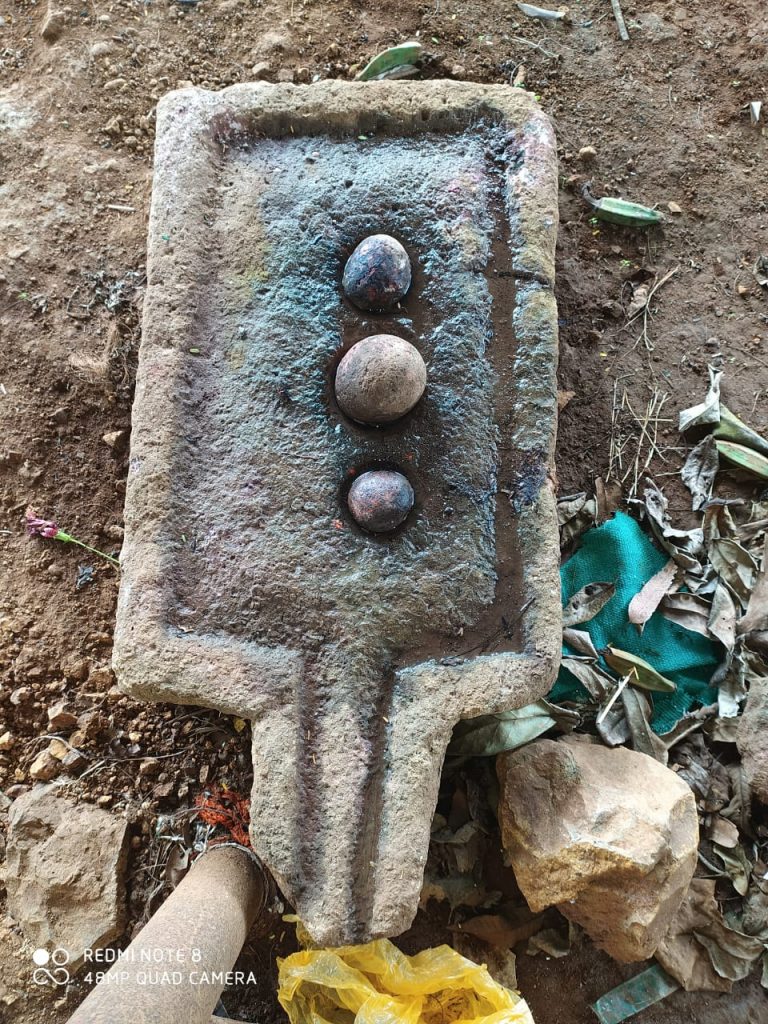
When news of the Coronavirus pandemic reached Purushwadi, many people felt that only the name Corona is new, but the symptoms of this disease are old. They followed the guidelines, but also kept faith in Jakhubai in order to keep her protection.
Even though I personally do not believe in superstition, I definitely have faith in our village deity. Every year I participate in the Jakhubai pilgrimage and Navratri festival. I really like these two festivals because they bring all the people in the village together. Relatives come to live together, meetings take place to discuss village affairs, and we discuss all our problems and brainstorm their solutions.
It is said that “history is the lamp of experience”. In the past, we’ve seen and survived pandemics and many deadly diseases. So, I hope that a solution will soon be found for Corona too. Till then, we must keep our faith alive.
Read the original story in Marathi
Meet the storyteller






